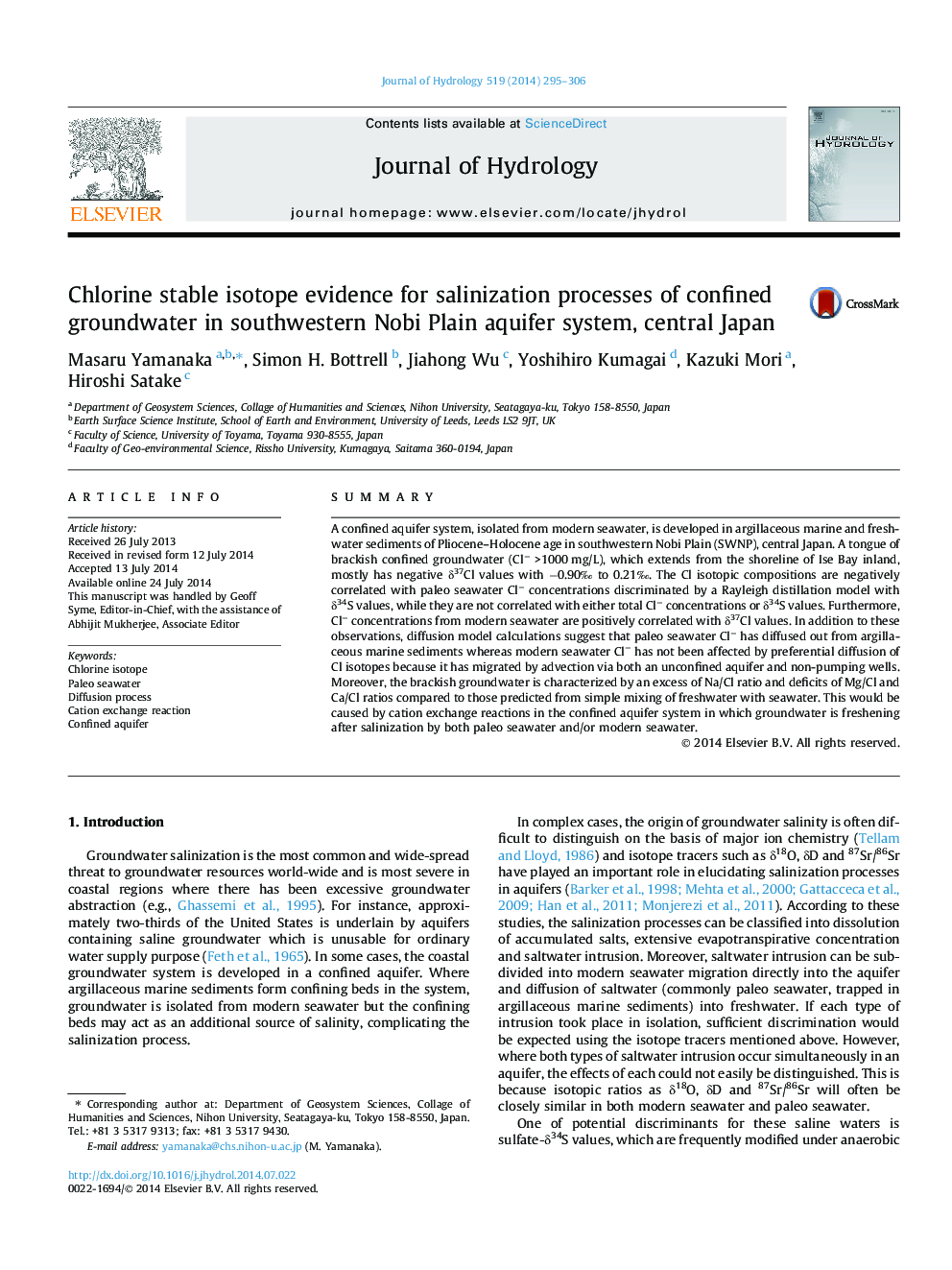| Article ID | Journal | Published Year | Pages | File Type |
|---|---|---|---|---|
| 6412373 | Journal of Hydrology | 2014 | 12 Pages |
â¢It is evaluated the salinization processes of confined groundwater.â¢The Cl isotopic ratios are negatively correlated with paleo seawater Clâ contents.â¢The paleo seawater Clâ have diffused out from argillaceous marine sediments.â¢In contrast, Clâ contents from modern seawater are positively with δ37Cl values.â¢The modern seawater Clâ has been supplied without diffusion likely via unused wells.
SummaryA confined aquifer system, isolated from modern seawater, is developed in argillaceous marine and freshwater sediments of Pliocene-Holocene age in southwestern Nobi Plain (SWNP), central Japan. A tongue of brackish confined groundwater (Clâ >1000 mg/L), which extends from the shoreline of Ise Bay inland, mostly has negative δ37Cl values with â0.90â° to 0.21â°. The Cl isotopic compositions are negatively correlated with paleo seawater Clâ concentrations discriminated by a Rayleigh distillation model with δ34S values, while they are not correlated with either total Clâ concentrations or δ34S values. Furthermore, Clâ concentrations from modern seawater are positively correlated with δ37Cl values. In addition to these observations, diffusion model calculations suggest that paleo seawater Clâ has diffused out from argillaceous marine sediments whereas modern seawater Clâ has not been affected by preferential diffusion of Cl isotopes because it has migrated by advection via both an unconfined aquifer and non-pumping wells. Moreover, the brackish groundwater is characterized by an excess of Na/Cl ratio and deficits of Mg/Cl and Ca/Cl ratios compared to those predicted from simple mixing of freshwater with seawater. This would be caused by cation exchange reactions in the confined aquifer system in which groundwater is freshening after salinization by both paleo seawater and/or modern seawater.
